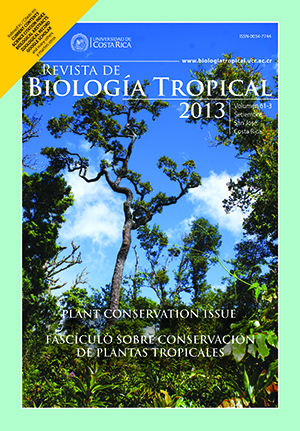Abstract
Sponges have an important ecological role in coral reef ecosystems. However, when compared to other benthic Phyla, it has been little researched. This research was focused in the variability of the community structure of sponges in three locations at Morrocoy National Park (Cayo Sombrero, Playa Mero and Punta Brava) exposed to different environmental conditions (transparency and currents intensity) and affected in different degree of severity by a mass mortality event in 1996. A total of 15 transects (10m long and 1m wide) were evaluated in three strata (between 3 and 15m depth) in each site, where all the individuals were counted by species. Relative abundance by species, diversity and evenness were calculated. Locations showed differences respect turbidity, wave and current intensity. 27 species were found in Morrocoy; Cayo Sombrero (23), Playa Mero (18) and Punta Brava (15). Agelas sceptrum, Amphimedon erina and Niphates erecta were the most common in first location; Niphates erecta and Dysidea etheria in Playa Mero and Dysidea etheria, Niphates erecta and Amphimedon erina in Punta Brava. The species composition showed statistical differences between all three locations; Cayo Sombrero resulted the most diverse and even, followed by Playa Mero and Punta Brava. According to Sorensen Similarity Index results, Cayo Sombrero and Playa Mero were more similar, while Punta Brava resulted the most different. The variability in environmental conditions and the differential mass mortality effects of 1996 in all three reefs, were probably the main causes of the differences between their sponge communities. Nevertheless, we cannot conclude about the weight of these factors.##plugins.facebook.comentarios##
Downloads
Download data is not yet available.


